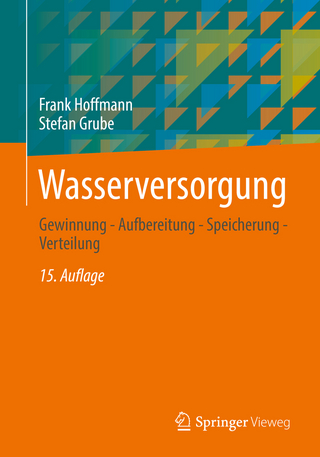
Crime Prevention
Routledge (Verlag)
978-1-032-22204-2 (ISBN)
In this book, Lab offers a thorough and well-rounded discussion of the many sides of the crime prevention debate in clear and accessible language, including the latest research concerning space syntax, physical environment and crime, neighborhood crime prevention programs, community policing, crime in schools, and electronic monitoring and home confinement.
This book is essential for undergraduates studying criminal justice, criminology, and sociology, in the U.S. and globally. Online resources include an instructor’s manual, test bank, and lecture slides for faculty, and a wide array of resources for students.
Steven P. Lab is an Emeritus Professor of Criminal Justice at Bowling Green State University where he served as Director of Criminal Justice for 27 years and Chair of Human Services for 17 years. He holds a Ph.D. in Criminology from the Florida State University School of Criminology and Criminal Justice. Lab is the author or co-author of eight books, co-editor of one encyclopedia, and author of more than 50 articles and book chapters. He is Assistant Editor of Crime Prevention & Community Safety: An International Journal and a past editor of the Journal of Crime and Justice. Lab has been a Visiting Professor in the U.K., at the Jill Dando Institute of Crime Science at University College London and at Keele University in Staffordshire, as well as a Visiting Fellow at Loughborough University and a Research Consultant with the Perpetuity Research Group at Leicester University. Lab is also a past president of the Academy of Criminal Justice Sciences.
CHAPTER 1 Crime and the Fear of Crime
Problem of Crime in Society
Costs of Crime/Victimization
Fear of Crime
Summary
CHAPTER 2 Crime Prevention
Crime Prevention through the Ages
Defining Crime Prevention
Crime Prevention Classifications
Alternate Classifications of Crime Prevention
CHAPTER 3 Evaluation and Crime Prevention
Types of Evaluation
Cost–Benefit Evaluations
Theory and Measurement in Evaluation
The Method for Evaluation
An Overview of the Book
PART I Primary Prevention
CHAPTER 4 The Physical Environment and Crime Prevention
Crime Prevention Through Environmental Design
Implementation of Environmental Design
The Impact of Physical Design
A Second-Generation CPTED
A Third-Generation CPTED
Incivility, Disorder, and Crime
Summary
CHAPTER 5 Community Crime Prevention
Types of Community Crime Prevention Approaches
Building Guardianship
Evaluation of Community Crime Prevention
Citizen Participation and Support
Problematic Assumptions in Organizing for Crime Prevention
Summary
CHAPTER 6 The Mass Media and Crime Prevention
The Media and Crime
Media Crime Prevention Activities
Publicity and Prevention
The Media’s Responsibility for Crime Prevention
Summary
CHAPTER 7 Developmental Crime Prevention
Background
Programs
Developmental Concerns
Summary
CHAPTER 8 General Deterrence
Deterrence
Requirements for Deterrence
The Deterrent Effect of Legal Sanctions
Perceptions and Deterrence
Summary
PART II Secondary Prevention
CHAPTER 9 Prediction for Secondary Prevention
Predicting Future Offending
Structured Professional Judgment
Risk Factors and Prediction
Predicting Places and Events
Repeat Victimization
Implications for Crime Prevention
CHAPTER 10 Situational Crime Prevention
The Growth of Situational Prevention
The Theoretical Basis
Situational Typologies
Issues and Concerns with Situational Prevention
Implementing Situational Prevention
Situational Prevention Studies
Issues with Product Design
Summary
CHAPTER 11 Displacement and Diffusion
Crime Displacement
Diffusion
Offender Choice and Mobility
Evidence of Displacement and Diffusion
Implications of Displacement and Diffusion
CHAPTER 12 Partnerships for Crime Prevention
Community Policing
Problem Identification
Partnership Efforts and Assessment
Problems and Concerns
Successful Partnerships
Summary
CHAPTER 13 Substance Use, Crime, and Crime Prevention
The Scope of Drug Use
The Drugs–Crime Connection
Interventions and Prevention
Drugs and Crime Prevention
CHAPTER 14 The School and Crime Prevention
Crime and Victimization in Schools
School Contributions to Antisocial Behavior
Responses to In-School Victimization
Police and Security Measures
School Programs for Delinquency Prevention
The Future of School/Educational Programs in Crime Prevention
PART III Tertiary Prevention
CHAPTER 15 Specific Deterrence and Incapacitation
The Specific Deterrent Effect of Criminal Sanctions
Incapacitation
Future Implications
CHAPTER 16 Rehabilitation
The "What Works?" Argument
Evaluations of Rehabilitation Programs
Assessing Rehabilitation and Crime Prevention
CHAPTER 17 Some Closing Thoughts on Crime Prevention and the Future
The State of the Evidence
Improving Our Knowledge
Recognizing the Diversity in Crime Prevention
Crime Prevention Policy
Summary
| Erscheinungsdatum | 13.02.2023 |
|---|---|
| Zusatzinfo | 62 Tables, color; 28 Line drawings, color; 28 Illustrations, color |
| Verlagsort | London |
| Sprache | englisch |
| Maße | 178 x 254 mm |
| Gewicht | 1060 g |
| Themenwelt | Naturwissenschaften ► Biologie ► Ökologie / Naturschutz |
| Naturwissenschaften ► Geowissenschaften ► Geografie / Kartografie | |
| Recht / Steuern ► Strafrecht ► Kriminologie | |
| Technik ► Architektur | |
| ISBN-10 | 1-032-22204-2 / 1032222042 |
| ISBN-13 | 978-1-032-22204-2 / 9781032222042 |
| Zustand | Neuware |
| Informationen gemäß Produktsicherheitsverordnung (GPSR) | |
| Haben Sie eine Frage zum Produkt? |
aus dem Bereich


